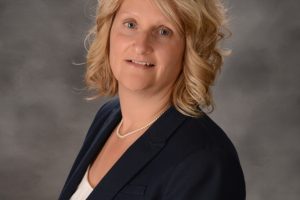Communication and Resolution Programs (CRPs)–-historically named disclosure and apology programs–are gaining ground in medical facilities across the country [1]. They promote transparency and improvement around adverse events, emphasize direct communication with patients and families about the events, and work toward resolution when patients are avoidably harmed during medical care. CRP/disclosure programs maintain relationships between patients, families and clinical staff by providing accountability (including making financial amends, if needed) while emphasizing learning from events to promote safety. The logic around this approach is simple–it is exactly what you would want if you were a patient who had something go wrong during your care. But for many years before CRPs were developed, health care facilities were advised to approach all adverse events with “deny and defend”; basically, talk to no one, avoid any further interaction with the effected patient or family, and let the lawyers handle whatever lawsuits come your way. This approach is still active in many health care facilities in the United States, although there has been significant research to date to try to quell the fears that CRPs will increase claims and costs for the implementing organization [2-3]. Even in those organizations adopting CRPs and their principles, the deep roots of these teachings still have enduring effects despite the past 20 years of efforts to promote and implement CRP or similar programs across the nation.
During a recent CRP/disclosure training seminar given at a major United States hospital by one of the authors of this article, a veteran nurse shared the following with the audience, which included her colleagues and the hospital’s leadership:
“This hospital does not want us saying ‘sorry’ to patients and families after something has gone wrong. In fact, they do not want us talking to families in any manner…they just want us to leave the room as quickly as possible.”
The hospital’s risk manager nearly fell out of his chair because this hospital had made a CRP part of its organization’s mission. Administration and risk management are fully on board with disclosure and apology, they have trained clinical staff on the concept, and the hospital has ethically settled numerous cases using disclosure strategies. The author was invited to reinforce and expand upon these ethical principles [4]. Yet, how did this veteran nurse miss the message? Had she received the message, but forgotten it? Unfortunately, this nurse is not alone. Many doctors and nurses express discomfort and unfamiliarity with what to say or do or who to contact for help post-adverse event, and therefore fall back into deny and defend behaviors that are so deeply ingrained [5-10].
When front-line staff are not comfortable communicating with patients and families after an adverse event–as the nurse’s story poignantly illustrated
–there is an increased chance relationships with patients and families will become damaged, while the ability to proactively solve problems decreases. While there is a wealth of information available regarding communication strategies after an adverse event, the reality is these conversations are rare in health care settings. Not only are post-event conversations infrequent, but they can also be high-stakes, making it difficult for staff who are put on the spot to approach the situation with new tools, rather than relying on the old teachings of avoidance and removal. They are also risky conversations, and those done without coaching can cause CRP efforts to go awry–disclosing to the patient information that later turned out to be inaccurate, blaming other colleagues, and incorrectly identifying the cause at such an early stage can risk worsening the relationship with the patient and pushing them in the direction of mistrust and retribution.
Supportive Strategies
Several strategies are being developed to combat the long-ingrained deny-and-defend model most health care providers were taught while giving them the support they need to be successful in these conversations. Many future doctors and nurses are beginning to hear about CRP and disclosure techniques in medical and nursing schools [11]. The Agency for Health Care Research and Quality has created an open-source Communication and Optimal Resolution (CANDOR) toolkit to help educate providers in all types of health care facilities in this approach [12]. CME courses, Grand Rounds lectures, and department, unit, or ambulatory facility presentations about disclosure or CANDOR training principles are ubiquitous. Some organizations make disclosure part of their on-boarding process for new hires. These training efforts can often convince clinical staff of the efficacy of disclosure/CANDOR and provide pointers and tips on how to behave post-event, but do not always help in the moments immediately after an event occurs. When adverse medical events happen, doctors and nurses need to be encouraged and reminded in a timely fashion how to have a difficult conversation.
Reaching front-line staff to communicate information is always a challenge in health care facilities as there are often hundreds of providers who care for patients in different ways, and in academic institutions there is the added challenge of additional turnover of medical students and house staff. Many organizations working to implement CRP programs have robust educational plans during implementation that can help to meet the needs of front-line providers who should be communicating with patients and families after something has gone wrong. The CARe (Communication, Apology and Resolution) program [13], which is housed at the Betsy Lehman Center for Patient Safety in Massachusetts, offers facilities an approach to give front-line staff the tools to do disclosure well. First, all facilities employing this approach should have just-in-time coaches that include risk, safety and quality leadership, who are highly trained in these disclosure conversations and in assisting others in having them. Then, the messaging to the front-line staff must be simple–providers need to know that disclosing events is expected, and that there is help available to them immediately when something goes wrong when caring for a patient. Education should emphasize the availability of just-in-time coaches and offer a centralized way to access these coaches at any time of day. It is recommended to have a disclosure coach available 24/7 to assist via a phone or pager contact.
Family/Patient Communications
While education about what a CRP is and why it works is important, the most important piece of information for any provider is how to get help communicating the event to the patient and family. Additional tools that can help with this include small cards with succinct information on disclosure principles and techniques, as well as the contact information for coaching support, that fit inside employee name badge holders. Posters in staff lounges, facility Intranet pages and prompts in patient safety reporting systems with the same information can also catch the eyes of clinicians faced with an adverse event and remind them of communication coaching resources.
While these resources are helpful, there is no substitute for continual dissemination of information regarding disclosure coaching resources. CARe leaders are encouraged to create a spreadsheet to ensure that every unit and department in the facility is educated about disclosure, and that this is “recapped” once a year or as often as necessary. Success stories should be shared often with front-line providers and leadership to keep the concept fresh and remind providers how necessary disclosure is. CARe facilities make disclosure messaging part of their on-boarding process for all news hires, including residents, and make disclosure part of their reports in Mortality and Morbidity reviews and other quality reviews to ensure that communicating to the patient and family about what occurred is a normalized part of the process after an adverse event. Disclosure messaging must be present and prevalent when staff are faced with an adverse medical event.
While there are myriad free resources available through the Betsy Lehman Center and through the AHRQ CANDOR Toolkit, this is also an opportunity for those who work in health care facilities to customize the messaging to providers in a way that will help them to understand the reasons why disclosure of adverse events is important, and how they can get help when they need to do it themselves. One senior physician told the authors that putting a poster with disclosure tips on the back of a bathroom stall would be helpful because a bathroom stall is the only place he has five uninterrupted minutes in any given day! Others help their clinical staff become comfortable with difficult conversations by sharing challenging adverse event cases at their floor meetings and asking staff how they would respond and helping them learn the best ways to handle those situations. Marketing and communications departments at larger institutions can also be a useful resource for creatively thinking about how to keep the messaging around disclosure at the forefront of clinicians’ minds. We need to help doctors and nurses meet this ethical obligation with timely messaging that is readily accessible.
Disclosure and other post-event discussions are part of the care continuum for patients and families. Let’s work together to support them by supporting our providers in feeling comfortable and safe expressing empathy, being honest and improving safety for the next patients who come through their doors.
References:
[1] Wojcieszak, Doug. “Review of disclosure and apology literature: gaps and needs.” Journal of Health Care Risk Management 40.1 (2020): 8-16. [2] Kachalia A, Kaufman SR, Boothman R, Anderson S, Welch K, Saint S, Rogers MA. Liability claims and costs before and after implementation of a medical error disclosure program. Ann Intern Med. 2010 Aug 17;153(4):213-21. [3] Kachalia A, Sands K, Niel MV, Dodson S, Roche S, Novack V, Yitshak-Sade M, Folcarelli P, Benjamin EM, Woodward AC, Mello MM. Effects Of A Communication-And-Resolution Program On Hospitals’ Malpractice Claims And Costs. Health Affairs. 2018 Nov;37(11):1836-1844. [4] Wojcieszak, Doug. Sorry Works! Presentation to United States Hospital, Spring 2022. [5] Mello, Michelle M., et al. “Challenges of Implementing a Communication‐and‐Resolution Program Where Multiple Organizations Must Cooperate.” Health Services Research 51 (2016): 2550-2568. [6] Mello, Michelle M., et al. “Communication-and-resolution programs: the challenges and lessons learned from six early adopters.” Health Affairs 33.1 (2014): 20-29. [7] Wu, Albert W., et al. “Disclosing adverse events to patients: international norms and trends.” Journal of Patient Safety 13.1 (2017): 43-49. [8] McDonald, Timothy B., et al. “Implementing communication and resolution programs: lessons learned from the first 200 hospitals.” Journal of Patient Safety and Risk Management 23.2 (2018): 73-78. [9] Ridgely, M. Susan, et al. “Progress at the intersection of patient safety and medical liability: insights from the AHRQ Patient Safety and Medical Liability Demonstration Program.” Health Services Research 51 (2016): 2414-2430. [10] Bell, Sigall K., et al. “Disclosure, apology, and offer programs: stakeholders’ views of barriers to and strategies for broad implementation.” The Milbank Quarterly 90.4 (2012): 682-705. [11] Wojcieszak, Doug. “Measuring the Uptake of Disclosure and Apology Content in the American Medical School Curriculum.” Journal of Medical Education and Curricular Development 9 (2022): 23821205221088790. [12] The CANDOR Toolkit is available from the Agency for Health Care Research and Quality at: https://www.ahrq.gov/patient-safety/settings/hospital/candor/modules.html [13] Van Niel, Melinda. “Creating a Communication Coaching Structure and Support for Your CRP Program.” Collaborative for Accountability and Improvement Online Training Program, October 2022.AUTHORS
Melinda Van Niel, BA, MBA, is the program director of Communication, Apology and Resolution (CARe) at the Betsy Lehman Center for Patient Safety. She has been working to help resolve adverse events through Communication and Resolution programs in Massachusetts for a decade. Previously she managed the Massachusetts Alliance for Communication and Resolution following Medical Injury (MACRMI) and led its implementation team; worked as the Manager of Patient Safety at Beth Israel Deaconess Medical Center in the department Healthcare Quality where she built one of the first Communication, Apology, and Resolution (CARe) programs in the state; and was a contributor and advisor to the AHRQ’s CANDOR Toolkit.
Doug Wojcieszak, MA, MS, BS, is a disclosure training consultant who created Sorry Works! and has trained thousands of healthcare, insurance, and legal professionals. Sorry Works! teaches health care, insurance, and legal professionals how to stay connected with patients and families after adverse medical events with a three-step process of empathy, review and resolution. Wojcieszak has had several personal and professional experiences with tort reform and medical malpractice issues. He lost his oldest brother to medical errors in 1998 and his family successfully sued the hospital and doctors with the case settling in 2000. He was executive Director of Illinois Lawsuit Abuse Watch (I-LAW), a grass-roots, pro-tort reform group, and established a PR firm and created a marketing term- “Sorry Works!” In 2005, he founded the Sorry Works! Coalition.









